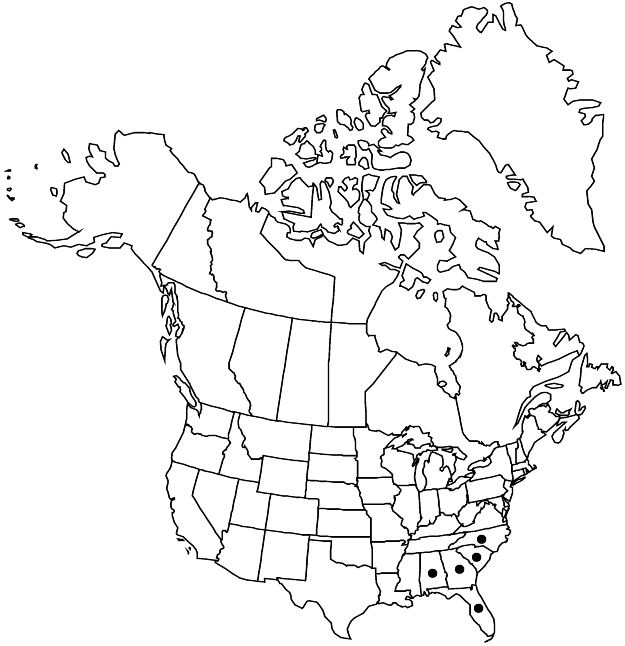Difference between revisions of "Crataegus furtiva"
Biltmore Bot. Stud. 1: 81. 1902.
FNA>Volume Importer |
imported>Volume Importer |
||
| (5 intermediate revisions by 2 users not shown) | |||
| Line 36: | Line 36: | ||
-->{{#Taxon: | -->{{#Taxon: | ||
name=Crataegus furtiva | name=Crataegus furtiva | ||
| − | |||
|authority=Beadle | |authority=Beadle | ||
|rank=species | |rank=species | ||
| Line 51: | Line 50: | ||
|publication year=1902 | |publication year=1902 | ||
|special status=Endemic | |special status=Endemic | ||
| − | |source xml=https:// | + | |source xml=https://bitbucket.org/aafc-mbb/fna-data-curation/src/2e0870ddd59836b60bcf96646a41e87ea5a5943a/coarse_grained_fna_xml/V9/V9_1081.xml |
|subfamily=Rosaceae subfam. Amygdaloideae | |subfamily=Rosaceae subfam. Amygdaloideae | ||
|tribe=Rosaceae tribe Gillenieae | |tribe=Rosaceae tribe Gillenieae | ||
Latest revision as of 22:53, 5 November 2020
Shrubs or trees, 30–60 dm, branches ± weeping. Stems: twigs: new growth densely appressed-white-pubescent, 1-year old purple-brown, older deep gray, relatively stout; thorns on twigs absent or few, straight, 1-year old purple-brown, ± stout, 2–3 cm. Leaves: petiole length 20–25% blade, broadly winged distally, pubescent, glandular; blade broadly obtrullate or obdeltate to obtrullate, 1.5–2.5 cm (length/width = 1–1.6), thick, stiff, base abruptly tapered, lobes 1–3 per side, subterminal or lateral, sinuses shallow, lobe apex obtuse, margins obscurely glandular-crenate, veins 2 or 3 per side (diverging at narrow angle from midvein), apex usually rounded to subacute, sometimes sharply cuspidate, or acute (in narrower-leaved forms), surfaces densely tomentose young, variably glabrescent, often persistently lanate. Inflorescences 2–4-flowered; branches densely tomentose-canescent; bracteoles deciduous, ± linear, margins sessile-glandular, adaxially short-pubescent. Flowers 14–16 mm diam.; hypanthium densely white appressed-pubescent; sepals narrowly triangular, 5 mm, margins glandular-serrate, abaxially appressed-white-pubescent; anthers cream; styles 3. Pomes orange to red, broadly ellipsoid to suborbicular, 8–15 mm diam., glabrous or sparsely pilose; sepals reflexed; pyrenes 3.
Phenology: Flowering Mar–Apr; fruiting Jul–Aug.
Habitat: Open brush, sandy soil, among sparse pine
Elevation: 0–200 m
Distribution

Ala., Fla., Ga., N.C., S.C.
Discussion
Crataegus furtiva is concentrated in Georgia and South Carolina with records from Alabama, Florida, and North Carolina. The species, as it is usually seen, has among the smallest leaves of the thick-twigged group (subser. Robustae) and is one of the most densely hairy of all members of ser. Lacrimatae when young. Its usually wide, obtrullate leaves are distinctive. The type form, which is also common, represents a narrower-leaved form. In spite of some variability in leaf shape and fruit size, shape, and residual indumentum, C. furtiva is usually easily recognized.
Selected References
None.